N-Isopropyl-N'-phenyl-1,4-phenylenediamine
Synonym(s):Dopamine- and cAMP-regulated neuronal phosphoprotein;IPPD;Neuronal phosphoprotein DARPP-32;PPP1R1B
- CAS NO.:101-72-4
- Empirical Formula: C15H18N2
- Molecular Weight: 226.32
- MDL number: MFCD00026348
- EINECS: 202-969-7
- SAFETY DATA SHEET (SDS)
- Update Date: 2024-12-18 14:15:32
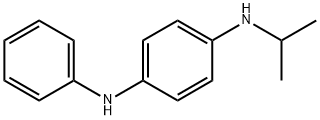
What is N-Isopropyl-N'-phenyl-1,4-phenylenediamine ?
Chemical properties
dark grey to black solid
The Uses of N-Isopropyl-N'-phenyl-1,4-phenylenediamine
Protection of rubbers against oxidation, ozone, flex-cracking, and poisoning by copper and manganese.
The Uses of N-Isopropyl-N'-phenyl-1,4-phenylenediamine
N-Isopropyl-N-phenyl-4-phenyle-nediamine is used in protection of rubber against oxidation, ozone, flex-cracking, and poisoning by copper and manganese; antidegradant in natural rubber, styrene-butadiene, nitrile-butadiene, butadiene, and chloroprene rubber.
The Uses of N-Isopropyl-N'-phenyl-1,4-phenylenediamine
This rubber chemical is used as an antioxidant. The main occupational sources are tyres.
Background
4-(Isopropylamino)diphenylamine, also known as IPPD, is a chemical compound commonly used as an antiozonant in rubbers, particularly those used for tires. It is also a known allergen. Sensitivity to this compound may be identified with a clinical patch test.
Indications
4-(Isopropylamino)diphenylamine is approved for use within allergenic epicutaneous patch tests which are indicated for use as an aid in the diagnosis of allergic contact dermatitis (ACD) in persons 6 years of age and older.
Definition
ChEBI: The N-substituted diamine that is 1,4-phenylenediamine substituted at one N with an isopropyl group and at the other with a phenyl group.
Synthesis Reference(s)
The Journal of Organic Chemistry, 29, p. 1265, 1964 DOI: 10.1021/jo01028a511
General Description
Dark gray to black flakes or brown-black small chip-like solid with an aromatic odor.
Air & Water Reactions
May be sensitive to heat, air, light and moisture during long term storage. Insoluble in water.
Reactivity Profile
N-Isopropyl-N'-phenyl-1,4-phenylenediamine reacts with oxidizing agents . Neutralizes acids in exothermic reactions to form salts plus water. May be incompatible with isocyanates, halogenated organics, peroxides, phenols (acidic), epoxides, anhydrides, and acid halides. Flammable gaseous hydrogen may be generated in combination with strong reducing agents, such as hydrides.
Fire Hazard
N-Isopropyl-N'-phenyl-1,4-phenylenediamine is combustible.
Flammability and Explosibility
Non flammable
Contact allergens
This rubber chemical is used as an antioxidant and antiozonant. The main occupational sources are tires.
Metabolism
Not Available
Properties of N-Isopropyl-N'-phenyl-1,4-phenylenediamine
| Melting point: | 72-76°C |
| Boiling point: | 161°C |
| Density | 1,17 g/cm3 |
| vapor pressure | 0.007Pa at 20℃ |
| refractive index | 1.5000 (estimate) |
| Flash point: | 161°C/1mm |
| storage temp. | -20°C |
| solubility | Chloroform (Slightly), DMSO (Slightly, Sonicated) |
| form | Solid |
| pka | 6.76±0.32(Predicted) |
| color | Grey to Very Dark Grey |
| Water Solubility | <0.1 g/100 mL at 18 ºC |
| Sensitive | Air Sensitive |
| Stability: | Stable. Combustible. Incompatible with strong oxidizing agents. |
| CAS DataBase Reference | 101-72-4(CAS DataBase Reference) |
| NIST Chemistry Reference | P-phenylenediamine, n-isopropyl-n'-phenyl-(101-72-4) |
| EPA Substance Registry System | N-Isopropyl-N'-phenyl-p-phenylenediamine (101-72-4) |
Safety information for N-Isopropyl-N'-phenyl-1,4-phenylenediamine
| Signal word | Warning |
| Pictogram(s) |
 Exclamation Mark Irritant GHS07  Environment GHS09 |
| GHS Hazard Statements |
H302:Acute toxicity,oral H317:Sensitisation, Skin H400:Hazardous to the aquatic environment, acute hazard H410:Hazardous to the aquatic environment, long-term hazard |
| Precautionary Statement Codes |
P262:Do not get in eyes, on skin, or on clothing. P273:Avoid release to the environment. |
Computed Descriptors for N-Isopropyl-N'-phenyl-1,4-phenylenediamine
N-Isopropyl-N'-phenyl-1,4-phenylenediamine manufacturer
NOCIL Limited
Nocil Limited
New Products
4-Fluorophenylacetic acid 4-Methylphenylacetic acid N-Boc-D-alaninol N-BOC-D/L-ALANINOL Tert-butyl bis(2-chloroethyl)carbamate 3-Morpholino-1-(4-nitrophenyl)-5,6-dihydropyridin- 2(1H)-one Furan-2,5-Dicarboxylic Acid Tropic acid S-2-CHLORO PROPIONIC ACID ETHYL ISOCYANOACETATE 2-Bromo-1,3-Bis(Dimethylamino)Trimethinium Hexafluorophosphate (6-METHYL-[1,3]DITHIOLO[4,5-b]QUINOXALIN-2-ONE INDAZOLE-3-CARBOXYLIC ACID 4-IODO BENZOIC ACID (2-Hydroxyphenyl)acetonitrile 4-Bromopyrazole 5,6-Dimethoxyindanone 2-(Cyanocyclohexyl)acetic acid 4-methoxy-3,5-dinitropyridine 2-aminopropyl benzoate hydrochloride 1-(4-(aminomethyl)benzyl)urea hydrochloride diethyl 2-(2-((tertbutoxycarbonyl)amino) ethyl)malonate tert-butyl 4- (ureidomethyl)benzylcarbamate Ethyl-2-chloro((4-methoxyphenyl)hydrazono)acetateRelated products of tetrahydrofuran

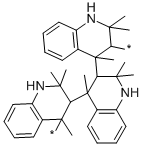


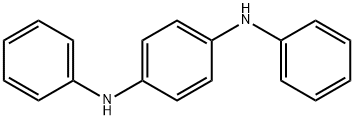
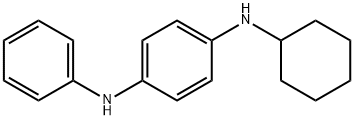
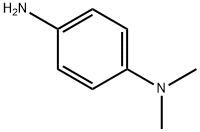

You may like
-
 101-72-4 N-Isopropyl-N'-phenyl-1,4-phenylenediamine 98%View Details
101-72-4 N-Isopropyl-N'-phenyl-1,4-phenylenediamine 98%View Details
101-72-4 -
 4-Isopropylaminodiphenylamine CAS 101-72-4View Details
4-Isopropylaminodiphenylamine CAS 101-72-4View Details
101-72-4 -
 N-Isopropyl-n'-phenyl-1,4-phenylenediamine 95% CAS 101-72-4View Details
N-Isopropyl-n'-phenyl-1,4-phenylenediamine 95% CAS 101-72-4View Details
101-72-4 -
 Anti-DARPP-32, N-Terminal antibody produced in rabbit CASView Details
Anti-DARPP-32, N-Terminal antibody produced in rabbit CASView Details -
 1975-50-4 98%View Details
1975-50-4 98%View Details
1975-50-4 -
 2-HYDROXY BENZYL ALCOHOL 98%View Details
2-HYDROXY BENZYL ALCOHOL 98%View Details
90-01-7 -
 14714-50-2 (2-Hydroxyphenyl)acetonitrile 98+View Details
14714-50-2 (2-Hydroxyphenyl)acetonitrile 98+View Details
14714-50-2 -
 118753-70-1 98+View Details
118753-70-1 98+View Details
118753-70-1